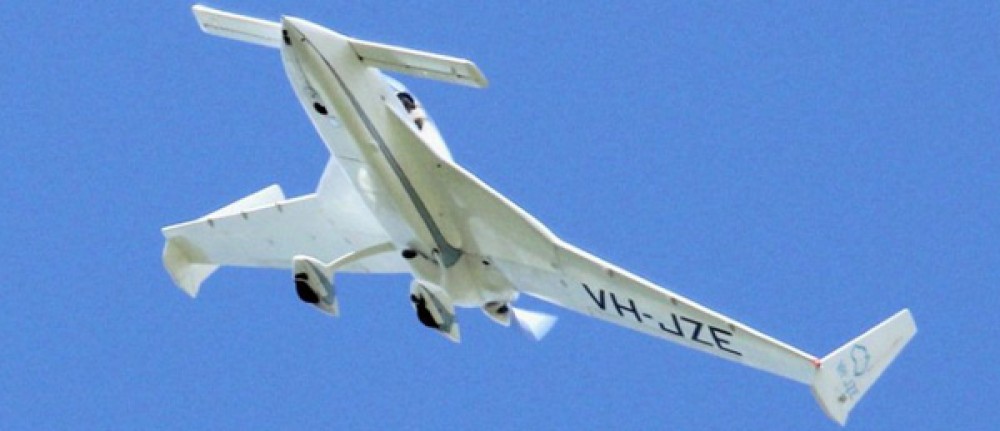I started off this morning by pulling the tape from the cured 3-ply CF flange layups on both the left and right outboard sides of the cowlings. These layups not only create the flange to secure the top and bottom cowlings together, but are also the underlayment for the elevation layups that will bring the top cowling bottom side (below the TE) level and even with the edge of the bottom cowling.
If you look closely, on the very outboard side of the cardboard forms, just adjacent to the wings, you’ll see a narrow “L” shaped strip of remaining wing lower flange. This is a stop for the yet-to-be-made elevation/”filler skin” layups to press up against to help control air leakage from the cowlings [trimming the cardboard forms to expose the “L” edges was one of the mods I had to make early yesterday before I started the layups].
Here we have the left side cardboard form, where you can see the taped interior that was pressed up against the exterior of the 3-ply CF layup… replete with peel ply.
And on the right side I’ve removed the form to simply expose the laid up and peel plied 3-ply CF. Again, note the “L” shaped edges of the lower wing flange.
As I mentioned in a recent blog post, I wasn’t overly happy with having to move my aft wing-edge CAMLOC forward. I also wasn’t happy with how close the outboard top/bottom cowl CAMLOC was to this wing CAMLOC, which was around 3″… while the other top/bottom CAMLOCs were spaced at a little under 5″ between them.
Well, I figured now was a good time to remedy all that before I moved any further in my cowling interface completion efforts. After a bunch of measurements I moved all the CAMLOC positions aft, starting with the very aft CAMLOC which I moved 1/2″ closer to the big opening. All the other spacings were lessened by about 5/16″ to 4.5″ on center. This put the gap between the bottom aft wing CAMLOC and the outboard top/bottom cowl CAMLOC at 4.2″. Very acceptable.
I then prepped for the next phase of the top/bottom cowl interface: full length 2-ply CF tapes on the inside of the existing 3-ply flanges. Obviously this would give me a total of 5 plies of CF for the flange while also connecting the 3 separate flanges (the aft 2 are connected by an overlapping ply of CF) layups together.
Here’s that layup on the left side.
I did add 1/32″ G10 reinforcements to the 2 center CAMLOC positions with wet flox on the face and dry micro around the edges. I had actually wanted the very outboard CAMLOC position to get the reinforcement and then skip the next position, but the flatness of the flange would have made it too much of a pain to add into the layup, so I moved it to the next position. For the first and last CAMLOC positions I simply added an extra patch of CF for reinforcement.
Finally, since the aft 3 CAMLOC receptacles on each side will be aluminum, I added a final patch of BID on the top of these CAMLOC positions to ensure no galvanic or other funky reactions take place over the life of this bird.
Here’s the right side full length 2-ply CF tape layup. As for dimensions my first ply in was 3.5″ wide (to overlap just a bit onto the original cowl structure) while the second and final ply was 2.5″ wide (to overlap onto the gap layup). Clearly I then peel plied the layups… with all the scrap peel ply I could find (cleaning house as this project nears the end!).
One final note on these layups is that I used MGS 285 here. I wanted to add in MGS to the mix here on this flange for a little extra oomph in strength.
I then called it a night and left these layups to cure overnight.








